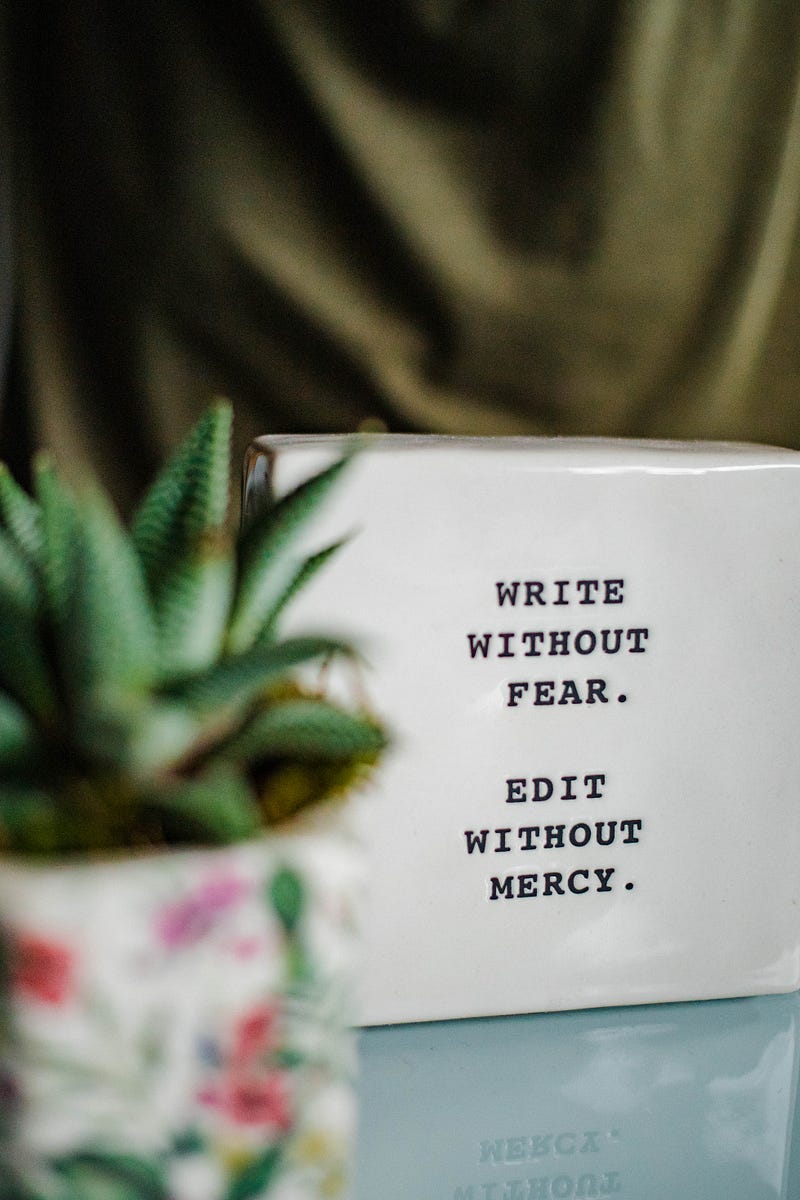
How to edit your own writing
Not everyone has the luxury of having an editor. Our new editor, Kenneth, shares a checklist of what you can do to make sure your writing…
Not everyone has the luxury of having an editor. Our new editor, Kenneth, shares a checklist of what you can do to make sure your writing is publication-ready.
The words are on the screen. The days of frenzied scribbling and chewing on synonyms long over. You sigh in relief, knowing you could recite your article from memory given how much time you’ve spent on the damn thing.
All that’s left between you and sweet, sweet release is the ‘Submit’ button.
Let’s not mince words — it’s times like this when you most need an editor. Having a professional point out murky phrases and structural problems is great insurance, especially if you’ve spent days wrestling with ideas, fuelled only by kopi-bing and wasabi peas. Yeah, we know how it goes.
But what if you have to do it all by yourself? Here are some tips to help you polish your final draft, gathered over four years of editorial nitpicking.
I: Concept
Start with the reader
If I had a dollar for every writer who tells me that their amazing content alone will bring the crowds, I’d…hardly be any richer, really.
All writing is a conversation, and most writers would never say something like that. Still, it’s surprising how many send in well-researched, intriguing drafts that ignore what their readers actually ask of them.

Take the time to understand your readers, especially when writing for publications. What are they really getting from your article? Do they warm to personal anecdotes or crisp summaries? How much jargon will they tolerate? Focusing on these now may save you a massive rewrite later.
Let the piece breathe
All writers make assumptions as they work on their stories— that’s natural. The problem comes when writers get so deep into a story that they forget to walk readers through these assumptions, losing them to confusion and distraction.
Give yourself a day off (or a few!) after finishing an article, then come back with a beginner’s mind. You’ll find points that need more detail, or even decide that doing an extended series on the topic makes more sense.
Too close to the deadline? Brush up on time management this year with the rest of us.
II: Content
Go large to small
It’s easy to get stuck on words or even punctuation when editing, only to miss far larger issues with organisation or phrasing. The most meticulous semicolons and dashes matter little if an argument chokes or paragraphs don’t flow well together.
Take a moment to remind yourself why your reader needs each section, paragraph, and sentence — in that order. How does each bit of text add to your story? What does it make the reader feel, and why?
Check sources and permissions
The last thing you want to hear after submitting your piece is that a key source is outdated or that a major data error slipped by. Or, perhaps, a legal letter in the mail about that image you so casually ripped off the interwebs.
Editing is partly about making sure sources are used responsibly. Review them for reliability and relevance early, and get your permissions for images, maps, and other assets in place.
III: Craft
Now that the big picture is clear, let’s dive into — gasp — grammar! Grammar seems at once the most arcane and boring editorial chore. Most writers don’t care for the difference between a restrictive clause and a subordinate clause — and really, can you blame them?
Thankfully, we editors have some quick tricks for fixing the most common grammatical problems.
Technology is your friend
- Spell check. Seems obvious, but how many actually use it?
- Writing apps such as Grammarly, WhiteSmoke, and Ginger help you rephrase sentences and suggest words, all from within your browser.
- Your favourite dictionary/thesaurus, for tweaking repeated words and misused terms. Tossing around ‘paradigm shift’, for one, gets our chief editor Peiying especially displeased.
- Today’s search engines — and the formidable grammar gurus and online communities within — answer most grammar questions in seconds.
Beware the classics
Covering the full range of grammar and diction errors goes way beyond what this piece can do. That said, let’s look at five easy wins for the bootstrapping editor (with commentary in parentheses).
- Check that your verbs and subjects agree. E.g., The developer (subject, singular), along with ten other colleagues, have (verb; has, singular) decided to participate in the strike.
- Stick with one tense and switch only when you’re writing about a different time frame. E.g., I ate my lunch, walk (walked) to the mall, and had dessert. I then take (took) a cab back to work.
- When in doubt, cut filler adverbs and adjectives down without mercy. E.g., He really did feel that in order to control the quickly spreading chaos, the government very much needs to take a firmly strong stance against protestors (cull them all!).
- While there’s nothing wrong with it, the passive voice can lengthen sentences and omit who or what caused an action to happen. E.g., The protestors were shamed and hauled into jail (by whom — and are these even the same group of people?).
- Repeating words often? Read again slowly, and make a list of key terms along the way.
Editing your own writing doesn’t come easy for many writers, but it can be deeply rewarding. We’re all starved for time, and crisp writing helps readers feel listened to, trust your perspectives, and change their minds about important ideas.
Any other tips that have worked for you? Let us know in the comments!

